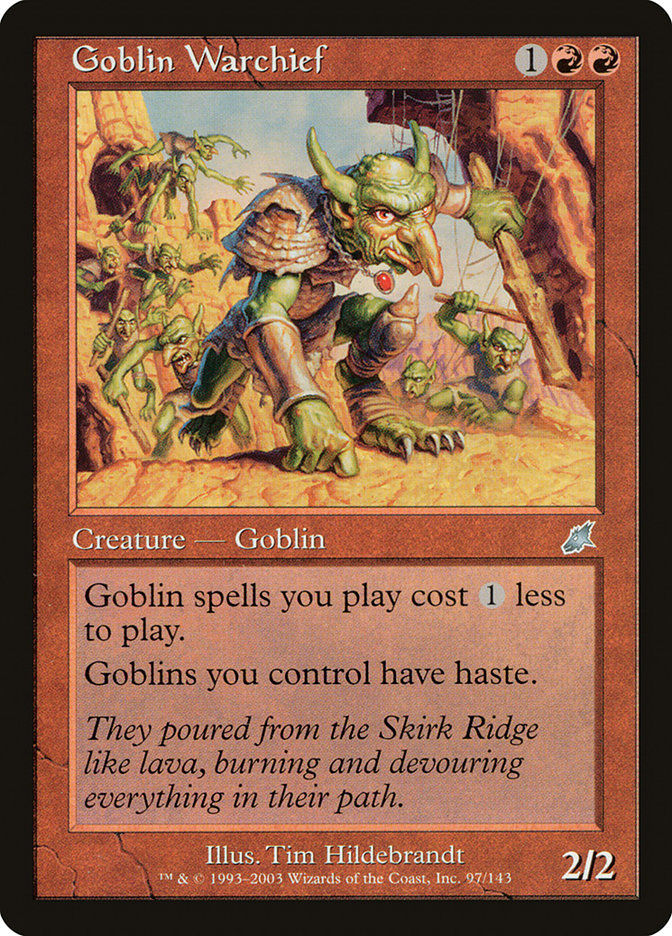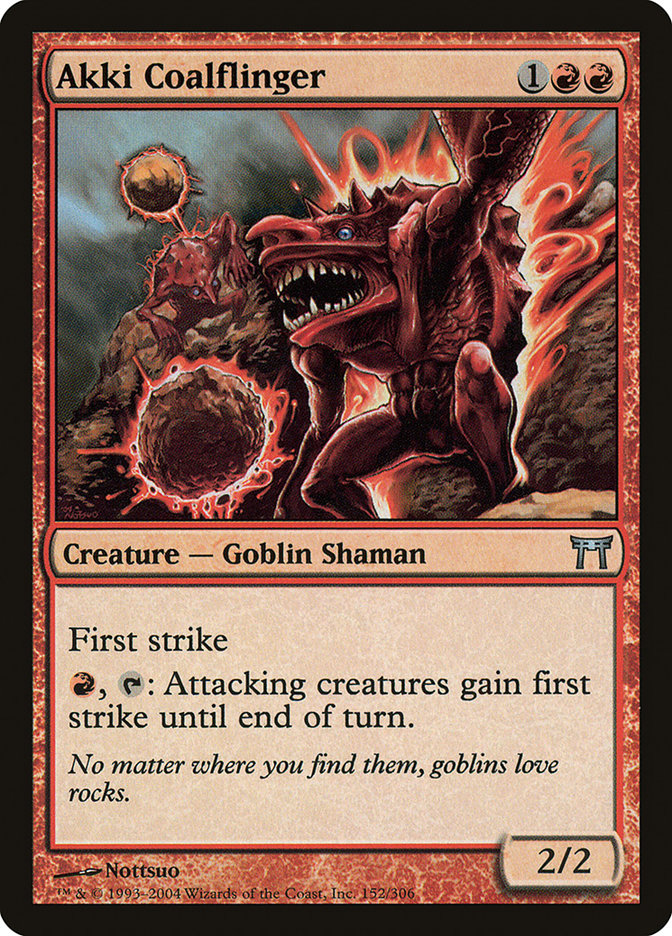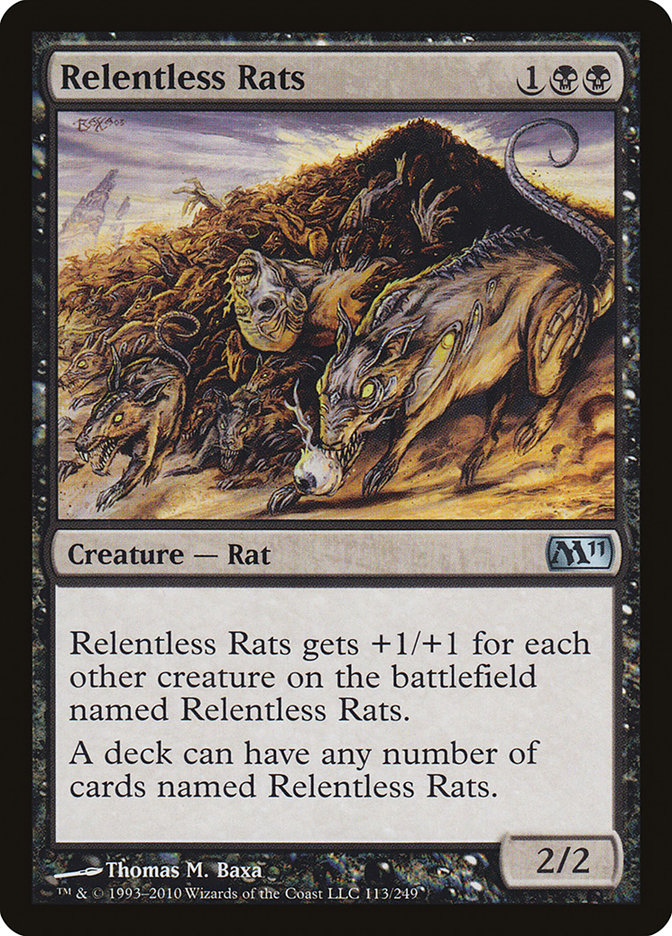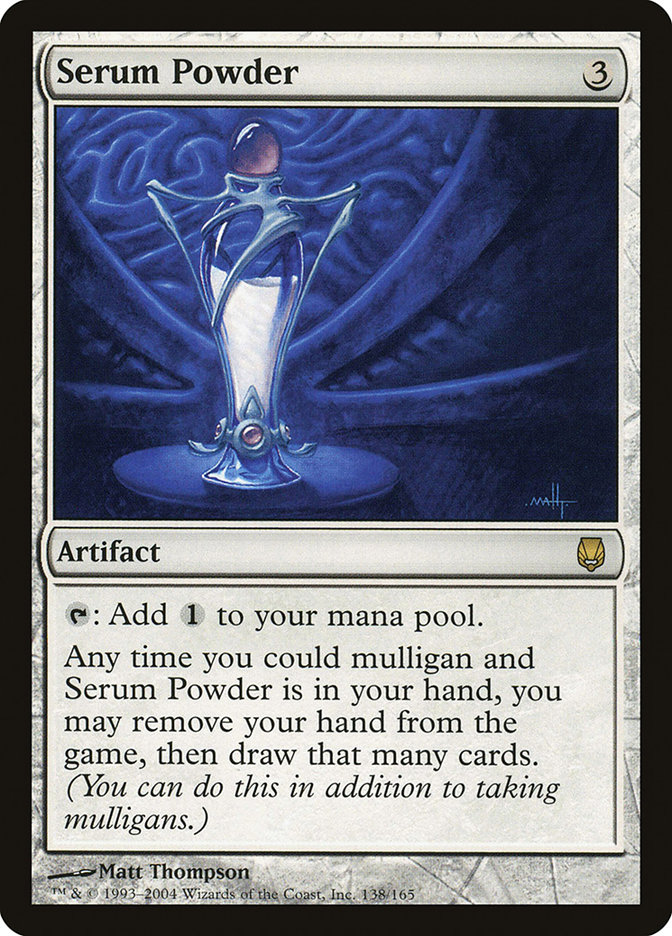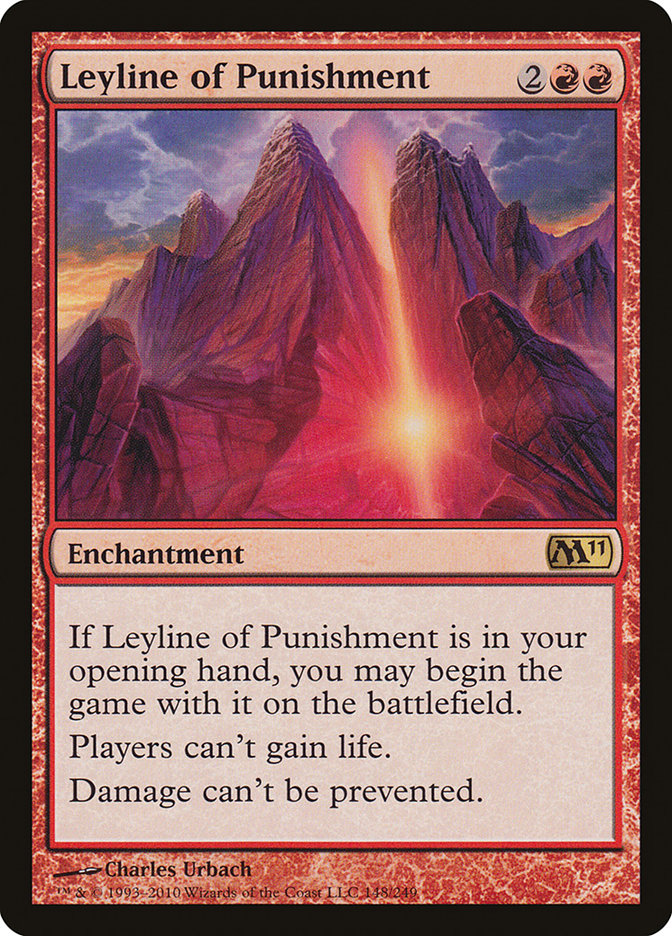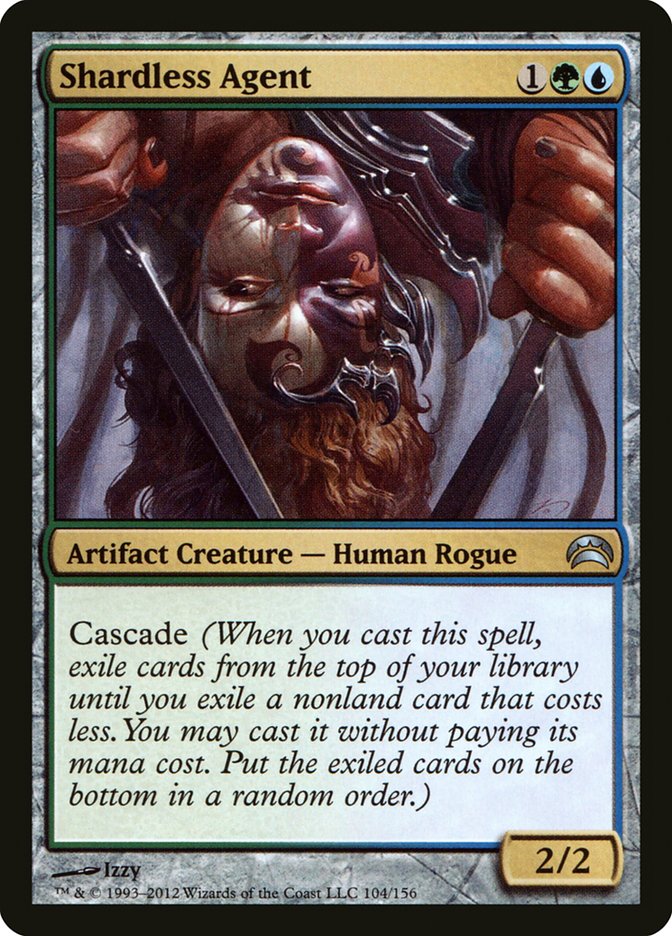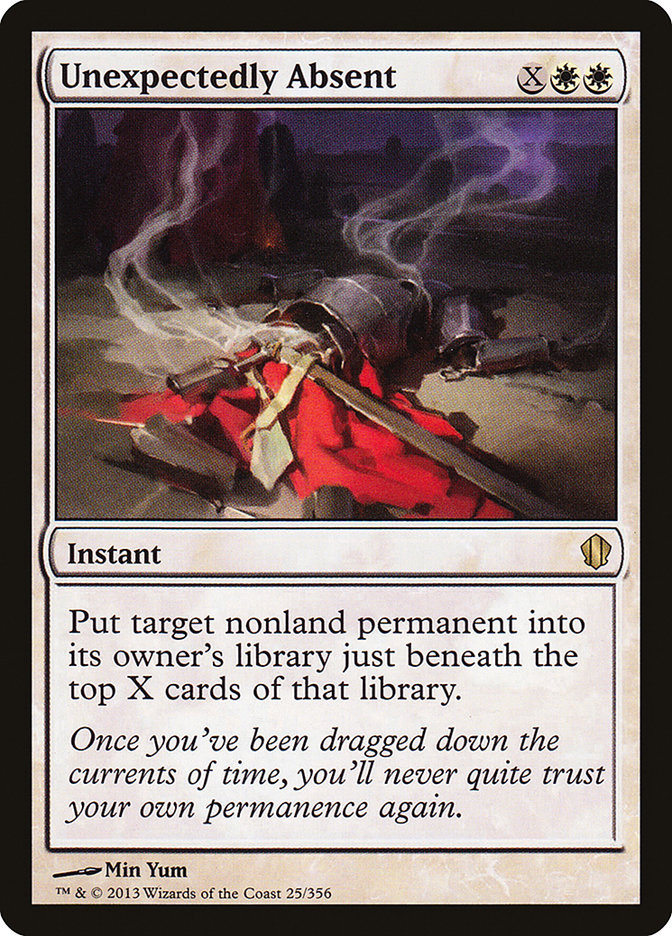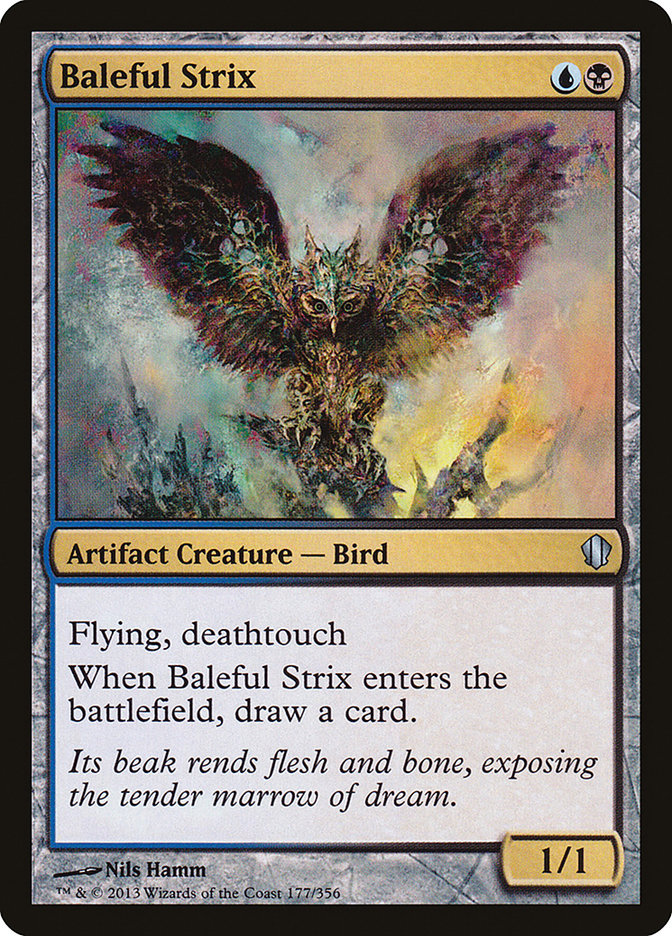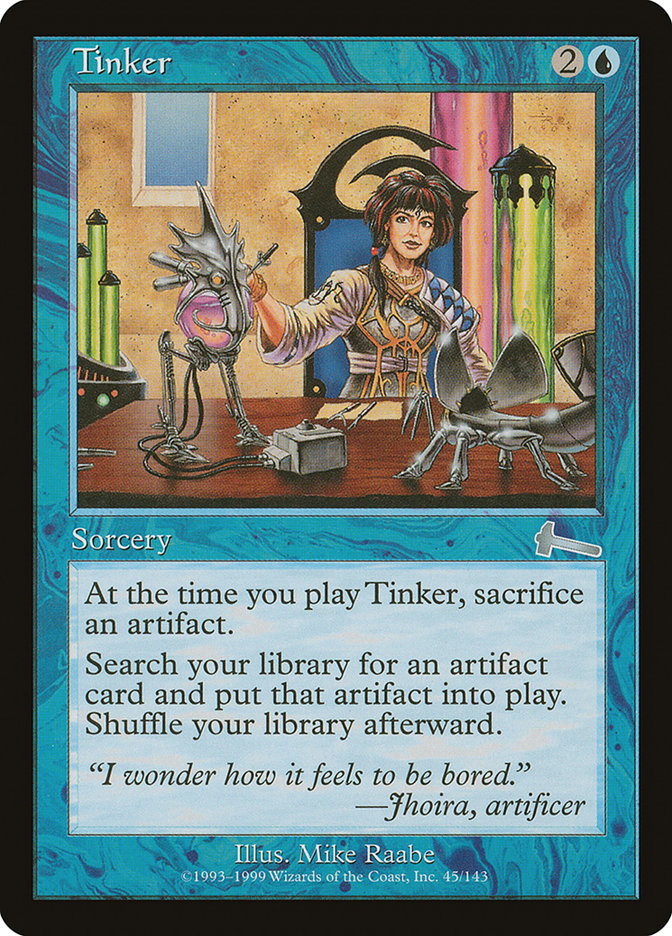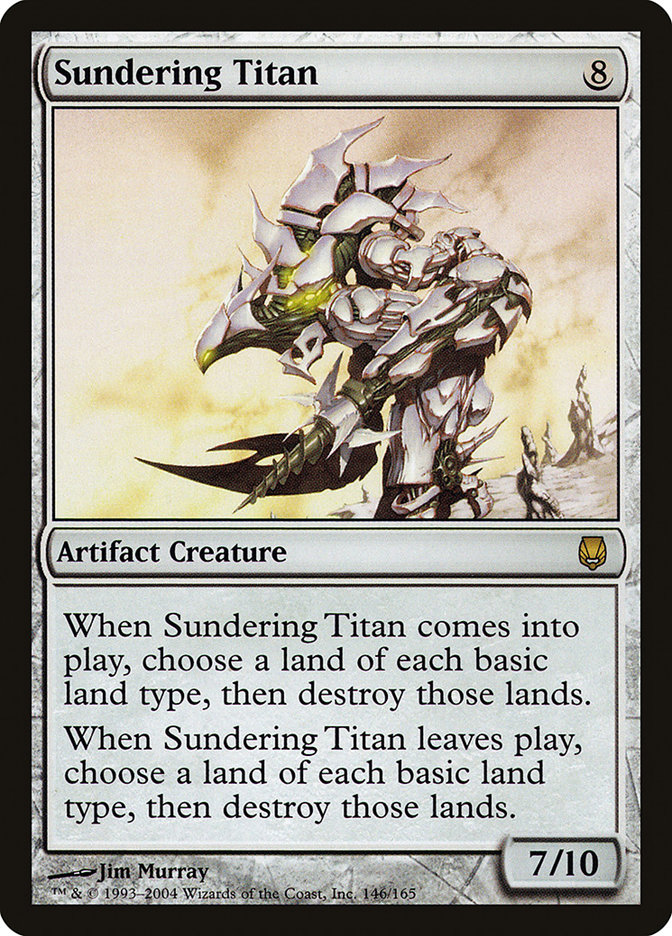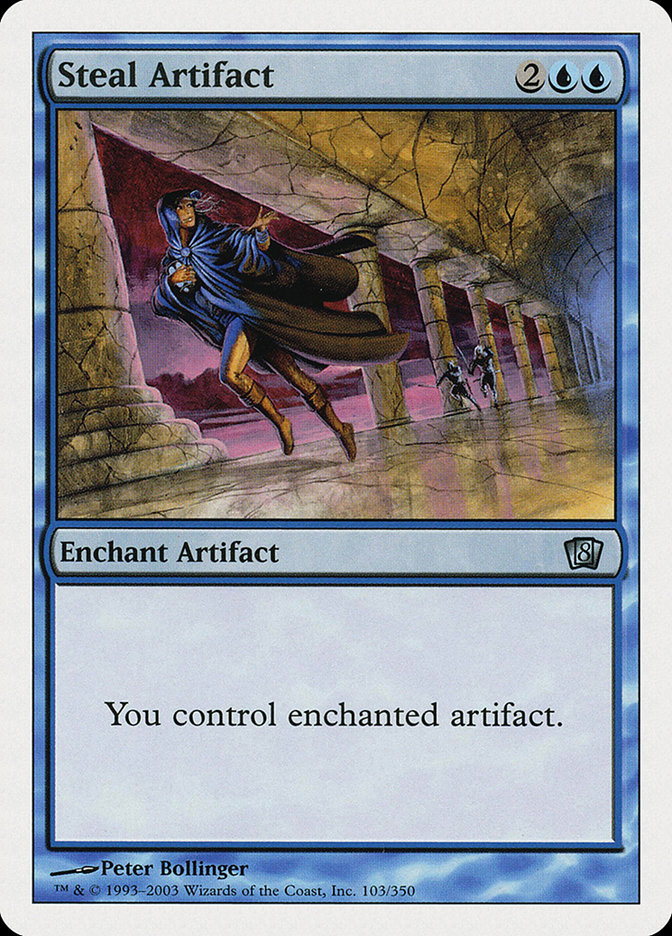Magic is a game of breaking the rules. Many abilities in the game exist solely to disrupt the basic rules.
You can’t attack with a creature that has not been in play since the start of your turn.
…except if it has haste.
Creatures deal damage at the same time.
…unless they have first strike.
And so on.
Having more than four copies of a card, taking free mulligans, starting the game with cards already in play, and just about anything else you can think of
are all examples of Magic cards doing what they do by breaking the basic rules of the game. Making the game so dynamic and flexible is a large part of why
the game has been able to evolve and progress so much over the years while still remaining fresh and interesting – and on the most basic level, it’s just
fun as well. Players constantly have to be on their toes because they never know what might be possible next.
However, while the mechanics of the game itself are constantly changing, some things have remained very constant over the years. A standard booster draft
requires eight players, three boosters per player, and goes forth in the same left-right-left pattern it always has. There have been mild exceptions like
the (sadly) long forgotten Rochester Draft and Two-Headed Giant draft, but for the most part drafting has remained largely stagnant until the rise of the
Cube.
Cube Drafting would blend together the fun and variety of drafting with the power level and deck construction of constructed, and designing and playing
with my cube over the years has been one of my most enjoyable experiences in Magic. Yet while the cube is constantly changing due to different design
philosophies and new cards being released, the actual draft itself never actually changes. Open your packs, left-right-left, finish with 45 cards and build
your deck.
This is about to change, as Wizards is releasing a new multiplayer-focused set based around multiplayer drafts called Conspiracy.
Now, I’m not going to lie, I hate multiplayer.
I hate the politics, how long the games take, the big splashy effects, and just the general philosophy of fun over competitiveness. As an extension of
that, I don’t really care for Commander or casual Magic in general, so typically, these sorts of casual/Commander products clearly aren’t made for me.
However, that’s not to say I don’t get anything out of them:
Due to their legality in Eternal formats, a number of Commander cards have made the jump into tournament Magic and put up some very good results; more
importantly, though, they’ve been able to make the jump into the Cube. The Commander products are great because they allow Wizards to print powerful new
cards that are probably too good for Standard, but are a lot of fun and great for Cube and the older formats.
So back to Conspiracy.
While I may not be interested in the set itself for its intended purpose, I am definitely very interested in picking out any potential gems for my cube.
The hook for this set is that it is a multiplayer set based around drafting, and that some of the cards affect the actual draft itself. There are two main
types spoiled so far: Conspiracies and the “Cogworkers.”
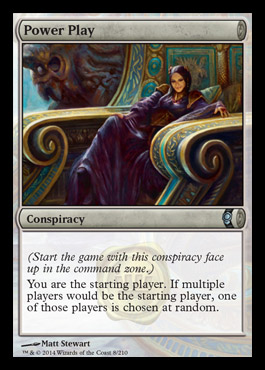
The Conspiracies are sort of like the old-school Vanguard cards, in that they exist outside of your deck and the game and alter the rules in some way. You
still draft them out of the packs like normal cards, but they don’t actually go in your deck.
For Cube I’m definitely not sold on these at all. They feel too casual to me, to the point that it doesn’t really feel like Magic anymore.
What I am really interested in, however, are a few of the “Cogwork” cards. There are seven of them spoiled so far, and each of them is an artifact creature
that has some sort of direct effect on the draft itself. Let’s take a look at them all, starting with the first one spoiled.
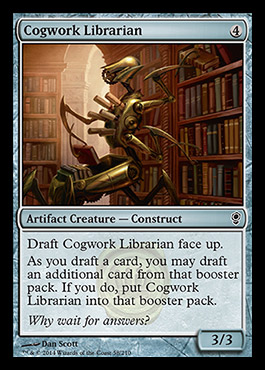
While pretty much an unplayable Cube card itself, Cogwork Librarian seems like it would definitely add a nice little subgame to the draft itself by
creating a good amount of tension. How early do you want to take it? Once you have it, do you want to use it now or save it for later?
The extra choices are nice, but most important is how it can help you – and anyone else it ends up with during the course of the draft – build a more
cohesive deck; this is one of the most important things in my cube, as I am always looking for ways to help people draft ‘decks’ and not just piles of good
cards.
One of the most annoying things about doing a Cube draft is when there are two crucial cards your deck really needs in the same pack together. Cogwork
Librarian can be a very valuable tool to alleviate this problem.
This is a card I will definitely be adding, and I am very interested to see how it actually plays. There really is no precedent for a card like this, which
makes it hard to evaluate. Is taking this card pick one, pack one correct? Maybe yes, maybe no.
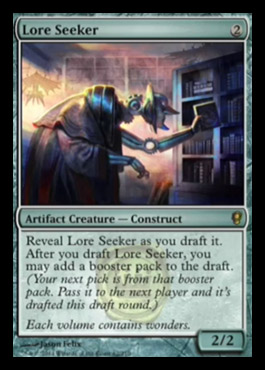
Our next card is very interesting because it actually fundamentally alters the card pool of the draft. Once Lore Seeker has been taken, everyone in the
draft will be getting at least two extra cards into their draft piles. This, of course, also has no precedent, as people will be ending the draft with
different amounts of cards. You also could have a scenario where there is a fifteen-card pack added to the draft around pick ten or so, and it will end up
going around the table by itself as the only pack left.
These things are of course a bit weird, but Lore Seeker also adds a lot of positive tension to the draft. This is a card that will get better and better as
the draft goes on, as once you are firmly entrenched into a strategy or deck and need certain pieces for your deck and you come to a pack with nothing for
you, you can take Lore Seeker and get another shot at it. It also gives you a few more cards to work with, as you might be able to table a card you would
want as well.
However, this card is not without its downsides. Unless you actually plan on casting Lore Seeker, taking this card is essentially mulliganing your pack.
That sounds great until you realize that you are giving up the rest of the pack to the table, and then also giving a whole new pack to the table as well.
While your deck may get better, the rest of the table’s decks will also be getting better as well. The designer in me says this is a very good problem to
have as drafts are always more fun when the decks are more cohesive.
Unlike Cogwork Librarian, Lore Seeker is not totally embarrassing to cast, either. Sometimes your aggressive deck just needs another two-mana creature, and
my Cube also supports aggressive artifact decks where a two-mana artifact creature really isn’t the worst.
Lore Seeker is definitely an exciting one, and as long as adding a pack to the draft doesn’t turn out to be too cumbersome or annoying, I’m also looking
forward to trying him out as well.
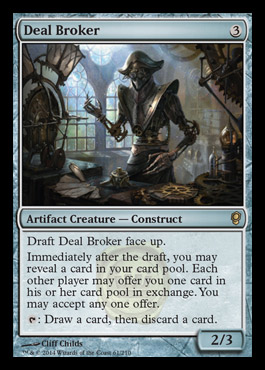
Deal Broker is a bit different from the first two cards as it does not directly affect the draft itself, but rather the card pools right afterward. This is
definitely on the border of what might feel a bit too silly for my usual drafts, but I think it is clean and simple enough to be worth a shot.
Once again, Deal Broker creates some fun tension. Once you have it, do you cut an extremely powerful card outside your colors like Jace, the Mind Sculptor,
hoping to get someone to pay you off for it later? Or do you just try and pass off whatever extras you picked up to whoever might want it? How early would
you even take a card like this?
These seem like fun questions to answer, and to top it all off, Deal Broker is not really a bad card in and of itself. It is a reasonably sized artifact
creature, and the looting ability can either improve card quality or provide a discard outlet.
My only real issue with the card is why it is necessary to draft it face up. Because it has no actual impact on the draft itself, this line of text seems
unnecessarily complicated. The previous two cards couldn’t work without being revealed, so the payoff is there despite the annoyance, but with Deal Broker
it just feels like extra work.
As far as the logistics of the player’s offers, I think it would be best to simply do it Show and Tell style (everyone selects the card they want to offer
face down and then reveals at the same time). This is definitely an addition I’m also excited about.
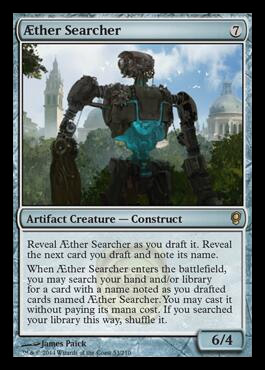
While the first three cards all do a very good job of making everyone’s deck more cohesive, Aether Searcher seems to do quite the opposite.
Aether Searcher is the kind of card that seems perfect for wacky casual multiplayer games. It is big, splashy, and has a somewhat random but potentially
very powerful effect. If the next card you draft is Emrakul, the Aeons Torn or Darksteel Colossus, awesome! But if it ends up being Izzet Signet or
Tin-Street Hooligan… not so awesome.
In a lot of ways Aether Searcher reminds me of Maelstrom Wanderer. It’s expensive, random, and amusing, but not nearly powerful enough to ever really want
to actually draft. Aether Searcher will be searching for another place to live, because it certainly won’t be in my cube.
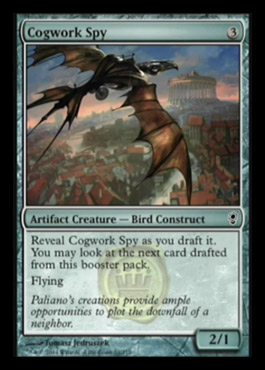
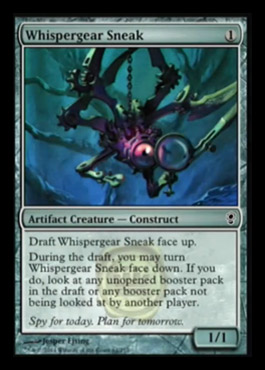
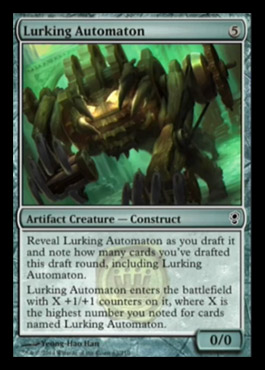
The last three cards are all far too underpowered to really be relevant in a Cube environment.
Cogwork Spy is all trouble and no payoff. While there are some slightly annoying logistical issues with some of the other cards we’ve looked at, they are
interesting enough to be worth the trouble. Cogwork Spy is just underwhelming in every sense of the word. Getting to peek at the next card picked isn’t
even terribly useful, and pretty much nobody is going to want a three-mana 2/1 flyer.
Whispergear Sneak has the exact same issues. Getting to look at a pack is also not really a huge benefit and is more of an annoyance for the entire draft
than anything else. On top of that, it’s a pretty safe bet that nobody is going to want a vanilla one-mana 1/1.
Lurking Automaton is also essentially worthless. You will never have more than one copy, which means wherever you draft it is what it will be, and even a
vanilla five-mana 10/10 wouldn’t even be that good against all the other powerful cards in the Cube. Lurking Automaton would exist solely to go as an
eighth pick or later, and that’s not very fun at all.
Despite the last few being duds, three out of seven isn’t bad at all, and I am very much looking forward to getting to see how those three affect our Cube
drafts.
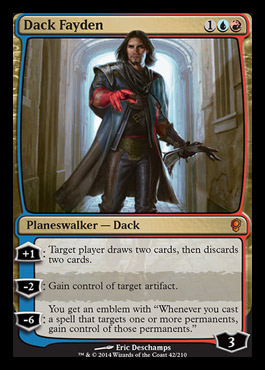
The last reasonable card spoiled so far for Cubes is the new Izzet Planeswalker, Dack Fayden, and Dack’s kind of a weirdo. As a three-mana Planeswalker,
Dack has to draw immediate consideration, as pretty much every three-mana walker has been at least reasonable, but Dack’s abilities are a bit random.
+1: Target player draws two cards, then discards two cards.
While you can Faithless Looting to discard junk you don’t want to improve your card quality, usually you want to be doing it in decks that want to abuse
the graveyard; however, there isn’t a whole lot of graveyard synergy in blue and red, and costing three mana puts Dack a bit behind the curve of the
one-mana Faithless Looting and Careful Study, both staples in my Cube. The fact that the effect is repeatable and adds loyalty is definitely a plus, but it
is definitely weaker than, say, the draw card ability on Jace Beleren.
-2: Gain control of target artifact.
This one is definitely the wild card, as it is an extremely powerful effect… if your opponent actually has an artifact to steal. There are a ton of
artifacts in my Cube, so this one won’t be too much of an issue, but my worry is that it will be too powerful against some decks and not powerful enough
against others. This is a big reason why I am extremely stingy with protection effects in the Cube, as it can be very frustrating to be a G/B Rock deck and
just be cold to a Mirran Crusader. I worry that Dack will be too good against artifact decks, while not being good enough otherwise.
-6: You get an emblem with “Whenever you cast a spell that targets one or more permanents, gain control of those permanents.”
Definitely not the most exciting ultimate, as it requires you to have another spell that targets just to do anything. Yes, you can Lighting Bolt a Grave
Titan and steal it, which is pretty sweet, but this seems like a pretty narrow ultimate.
Overall, Dack is an interesting card, and when it comes to new cards I’m unsure about (especially Planeswalkers), I tend to just toss them in and see how
it goes before passing judgment. Very often you’ve just gotta play with a card to see how it is.
While these kinds of sets are definitely not aimed at players like myself, I think Wizards really does a very good job of making sure that there are enough
interesting things for the entire playerbase to play around with. I’m really looking forward to seeing how these cards play out in my Cube, and if there
are going to be any more spoiled.

